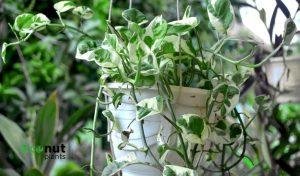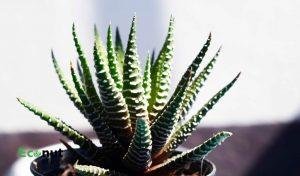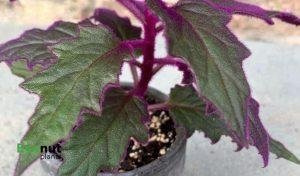Exotic Angel Plants are a type of foliage hybrid that comes in a variety of colors and shapes. These tropical plants are bred particularly to be cultivated in greenhouses as indoor plants. They typically employ more cuttings per container in this manner to produce a bigger, lush’s plant than their competition. They distinguish their brand among retailers by growing a higher-quality plant and offering an excellent mix.
The Exotic Angel houseplants are basically the same as those cultivated by any grower, acquiring an Exotic Angel plants offers several benefits. Because they are branded, the firm takes great care to guarantee that every stage of the production process is controlled and that only healthy plants are transported.
Exotic Angel plants
Exotic angel plants are well-grown houseplants. The Exotic Angel has been part of Hermann Engelmann Greenhouse, Inc. in its 43-year history. This is a brand name for over 400 varieties of houseplants made by After the death of its creator, Hermann Engelmann Greenhouse, in 2014, it was purchased by Costa Farms, which promised to continue to support the Exotic Angel brand and build on its tradition.
There are about 400 plants have been designated exotic angel plants, with some of the more well-known varieties including Chinese evergreen, lace leaf, dumb cane, dragon plant, and fig. All these plants are of tropical origin and have been cultivated. Exotic angel plants are hybrid foliage plants that come in a variety of colors and varieties. An exotic plant can be kept indoors or in a greenhouse.
Fortunately, caring for exotic angelica plants is not that difficult. If you know how to water and fertilizer, you shouldn’t have many problems growing plants. If you’ve recently purchased an exotic angel plant, here’s what you need to know about Exotic Angel plants care.
Exotic angel Plants Types
There are different species of exotic plants, which come in different leaf shapes, designs and colors like pink, green, red veined, ball like, yellow veined, etc. Some of their species are as follows.
1. Nerve Plant
 Nerve plant (Fittonia albivenis) group is known as a “mosaic plant” because of its small, green leaves with red, pink, or white veins that mimic nerves and break up the green areas to look like mosaic tiles! The slow-growing plant seldom blossoms, but it does occasionally bloom with small reddish or yellowish-white spikes.
Nerve plant (Fittonia albivenis) group is known as a “mosaic plant” because of its small, green leaves with red, pink, or white veins that mimic nerves and break up the green areas to look like mosaic tiles! The slow-growing plant seldom blossoms, but it does occasionally bloom with small reddish or yellowish-white spikes.
The Nerve plant is a spreading evergreen perennial with beautifully veined, deep-green, oval leaves that is typically cultivated as a houseplant. Although silvery-white veins are the most common, you may also find variations with veins in red, pink, white, and green. Fittonia normally grows 3 to 6 inches tall with a trailing spread of 12 to 18 inches.
2. Dieffenbachia Plant

Dieffenbachia grows best indoors in bright, indirect sunshine. Plant it in a fertile, well-drained, peat-rich potting soil. It thrives in extreme humidity because it is a tropical plant. One method is to set the pot on a tray of stones filled with water. During the dry winter months, misting the foliage might aid.
Overwatering is a typical issue with this plant, Allow the top 2 inches of potting soil to dry fully before thoroughly watering the pot so that moisture drains through the bottom. Lower, weak leaves can be removed as the plant grows.
3. Croton

This eye-catching plant is a crowd pleaser thanks to its vibrant red, yellow, orange, and green leaves, which add color and excitement to any environment! Give lots of light to keep the colors bright and bold. To keep the leaves tender, use a misting or moisture tray.
To keep the leaves clean and dust-free, gently wipe them with a damp towel twice a month. Fertilize the plant when it is actively growing in the spring and summer. In the fall and winter, fertilize less often or avoid fertilizing completely.
4. Hoya Plant

The hoys family has around 500 distinct species with several cultivars. Some have beautiful and fragrant blooms, while others are vines with a broad range of leaf forms. They have a variety of floral colors, but they all have star-shaped petals. Local insects will also pollinate them outside of their natural region.
The Philippines, India, Thailand, Malaysia, Vietnam, Bangladesh, Indonesia, Polynesia, and New Guinea are home to the majority of Hoyas and several are Australians. Some are epiphytic plants, while others survive on the ground with roots that extend just shallowly beneath the soil surface.
5. Zebra plant

The zebra plant (Aphelandra squarrosa), which is normally grown indoors, is well-known for its distinctive dark green leaves that are striped with white veins. This plant’s brilliant blossoms are its crowning glory. The indoor zebra plant grows slowly, reaching maturity at a height of a couple of feet in three years.
A zebra plant blooms with towering golden bracts that can reach several inches in length and number two to four per plant, lasting up to six weeks. To minimize leaf blight, provide adequate moisture, water when the top inch of soil is dry, and keep out of indirect sunlight.
6. Purple Pleasure Plant

Purple passion plant (Gynura aurantiaca) is a kind plant that is widely seen in American nurseries. This outdoor or indoor plant, also known as purple passion vine or purple velvet plant, brilliant splash will give of color to décor. This tropical plant often has deep crimson or purple stems and undersides, and some varieties can grow in upright bunches or as trailing ivy.
The purple passion plant nearly seems to sparkle in the sun due to the tiny, velvety purple hairs on its green leaves. This deep purple, multi-purpose plant looks great draped over a hanging basket, trellis, or shelf! Water only when the top 1 to 2 inches of soil is dry, keeping leaves away from drafts, heaters and air conditioner vents to keep healthy and bright.
How To Grow Exotic Angel Plants
The Exotic Angel brand is recognized for its petite size, making it an excellent choice for most indoor plant fans. Not all of them are as small, with Snake Plant and Photos among the biggest. These species may grow up to 20 inches tall, which is on the big side for houseplants. Fortunately, you may choose a smaller plant if that is what you require.
Water requirements vary by species, but most Exotic Angel plants demand equally wet but not too saturated soil. This involves watering when the top few inches of soil are dry. Some drought-tolerant cultivars, such as photos, dracaenas, and succulents, may require less water.
Pruning
Exotic angel plants are a type of houseplant recognized for their lovely, variegated leaves, which may be fed if trimmed properly and on time. Before new growth starts, trim these plants in early spring.
To stimulate bushy growth, start by removing any dead or damaged leaves and trimming back any lanky stems when pruning an exotic angel plant. Finally, shape the plant to your liking.
Propagation
There is various ways to grow an Exotic Angel plants, but the two most prevalent methods are stem cuttings and water propagation. To boost root development and prevent the cutting from infection, add a little amount of rooting hormone or Propagation Promoter. You should notice new roots within a few weeks! Plant the cutting in the soil and care for it as if it were a mature plant when the roots are an inch long.
Other plants, such as peace lilies, crotons, and snake plants, may be propagated easily by separation. Simply take the plant out of its pot and carefully cut or pull apart the root ball to create new, smaller plants! Plant the additional plants in smaller pots and continue to care for them as before.
Also Read: Aglaonema Plant Care Guide – How To Keep Your Plant Healthy
Exotic Angel Plants Care
There is no established way to care for an Exotic Angel Plant. Depending on the species, each of the 400 variants requires somewhat different sorts of care. You may anticipate an Exotic Angel plants fig to demand the same care as any other fig.
Exotic Angel plants require the same amount of watering, light, and fertilizer as any other pothouse. The only thing that distinguishes an Exotic Angel plants from any other plant of the same kind is the brand name: everything else is the same. Having said that, you may anticipate some care needs to apply regardless of the species.
Soil and fertilizer
The majority of the Exotic Angel plants families prefer damp but not too saturated soil. Plants can rot if kept in water for an extended period of time, so search for well-draining, peat moss-based soils that are rich in organic content.
You should evaluate plants first because some plants do not require the boost while others must in order to produce vibrant flowers. Exotic Angel plants may not usually require it, although they can be nitrogen, phosphorus, and potassium poor. Water-soluble fertilizer might be good once a month. Just be sure to begin this feeding regimen immediately after watering and only if active growth is detected.
Light and water
Indirect sunlight is beneficial to the majority of Exotic Angel Plants. When put in direct sunlight, many blooming plants can burn but they will still require sufficient of natural light to develop properly and produce brilliant blooms. Some varieties require less sun than others.
All plants require water and should be watered on a regular basis, but exotic angel plants have far greater requirements! When it comes to watering, this plant requires special attention. You must ensure that you are giving the plant exactly the right amount of water to dampen the soil and provide it moisture, but you must watch out that you are not drowning the setup by overwatering.
Temperature and humidity
The temperature should be kept between 60.8 and 69.8 degrees Fahrenheit, which are reasonably easy to do indoors. Their main problem is when the temperature drops too abruptly or there is a sudden draft. Extreme heat and dry air are important factors to consider. This may have an adverse effect on your houseplant as well.
Most Exotic Angel plants from the tropics prefer a little dampness. Ideal humidity ranges between 40% and 50%. To boost humidity, try installing a humidifier nearby, putting the plant on a pebble or humidity tray, or clustering plants together.
Pests and disease
The most prevalent pests include scale insects, spider mites, aphids, mealybugs, and trips. The bulk of these enemies like to assault your Exotic Angel’s leaves or stems, perhaps preventing growth. Webs, leaf marks, or a sticky residue are all indications that your Exotic Angel has been infected with one of these parasites.
If you’re Exotic Angel plants has dry, crunchy leaves and fading foliage, consider watering more thoroughly or more regularly if the soil looks to be very dry. Remove any dead leaves so the plant can concentrate its efforts on creating new leaves.
Exotic Angel plants get root rot if the stems are fragile, the soil smells bad, and the leaves have brown blotches. Rinse as much dirt as possible from the root ball before repotting into a fresh container.
I hope you enjoyed reading the exotic angel Planting Guide. If you think we have forgotten something or have a suggestion, please leave it in the comment section below.
If you are searching fresh and live houseplants online then checkout our extensive collection of amazing indoor and outdoor houseplants.

